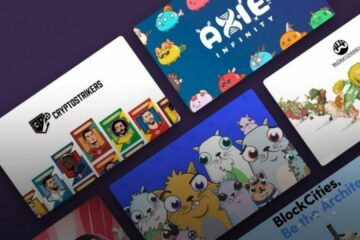There are many ways to define art (Blockchain). Some see it as a means of self-expression, some as an aesthetic experience, and others still as a commodity. But what does this have to do with the digital era? Well, in the past few decades we’ve seen tremendous changes in how people consume art – from the rise of social media networks to mobile devices that put millions of images at our fingertips. This has had an enormous impact on artists themselves – for better or worse. Artists are now more connected than ever before, but they’re also under constant pressure from fans who want something new all the time. The result is a culture where too many artists feel compelled to churn out work quickly without much thought given to quality or uniqueness…
What has the digital era meant for artists?
As the digital era has grown, artists have found new ways to connect with their fans. This has made it easier for people to access more art than they could ever before, but also exposes them to more bad art than they would have seen otherwise.
Artists are now more connected than ever before, but they’re also under constant pressure from fans who want something new all the time. The result is a culture where too many artists feel compelled to churn out work quickly without much thought given to quality or uniqueness.
How has blockchain changed the game for artists?
This can all change with new technologies like blockchain. For example, some companies use blockchain technology to verify and certify the authenticity of art while also giving artists more control over their work. Blockchain allows artists to upload their works and attach a ‘smart contract’ which defines who has permission to reproduce the art and how much it will cost if they do. It’s an innovative process that reimagines what it means to be an artist in the digital era. Artists don’t only benefit from having more control over their work – there’s also less risk of artwork being pirated or forged (such as fake Picassos now flooding the market). With blockchain lending authenticity to each work of art while also reducing the risk of forgery or theft, artists are able to spend less time worrying about piracy and more time creating something new.
Why should you support blockchain-based art marketplaces?
The digital era brought with it rising inequality. The internet gave anyone with an idea – no matter how good or bad – a chance to succeed. Now that so many barriers have been broken down, the quality of work has dropped while piracy has become more common. So what does this mean for artists? For one, you can finally take control over your own work by managing who sees it and who profits off of it! Blockchain provides a way for artists to be rewarded directly from their fans without any middlemen taking cuts along the way. So if you’re an artist looking for a better way to manage your rights and live off your work, don’t miss out on blockchain opportunities!
How does blockchain protect art?
Blockchain-based marketplaces protect art by providing an immutable tracking system for work and verifying the authenticity of past pieces. This can all change with new technologies like blockchain. For example, some companies use blockchain to verify and certify artwork while also giving artists more control over their work. Blockchain allows artists to upload their works and attach a ‘smart contract’ which defines who has permission to reproduce the art and how much it will cost if they do. It’s an innovative process that reimagines what it means to be an artist in the digital era. Artists don’t only benefit from having more control over their work – there’s also less risk of artwork being pirated or forged (such as fake Picassos now flooding the market). With blockchain lending authenticity to each work of art while also reducing the risk of forgery or theft, artists are able to spend less time worrying about piracy and more time creating something new.
How does blockchain benefit buyers?
The digital era brought with it rising inequality. The internet gave anyone with an idea – no matter how good or bad – a chance to succeed. Now that so many barriers have been broken down, the quality of work has dropped while piracy has become more common. So what does this mean for artists? For one, you can finally take control over your own work by managing who sees it and who profits off of it! Blockchain provides a way for artists to be rewarded directly from their fans without any middlemen taking cuts along the way. So if you’re an artist looking for a better way to manage your rights and live off your work, don’t miss out on blockchain opportunities!
How does blockchain benefit collectors?
Blockchain marketplaces protect art by providing an immutable tracking system for work and verifying the authenticity of past pieces. This can all change with new technologies like blockchain. For example, some companies use blockchain to verify and certify artwork while also giving artists more control over their work. Blockchain allows artists to upload their works and attach a ‘smart contract’ which defines who has permission to reproduce the art and how much it will cost if they do. It’s an innovative process that reimagines what it means to be an artist in the digital era. Artists don’t only benefit from having more control over their work – there’s also less risk of artwork being pirated or forged (such as fake Picassos now flooding the market). With blockchain lending authenticity to each work of art while also reducing the risk of forgery or theft, artists are able to spend less time worrying about piracy and more time creating something new.



0 Comments